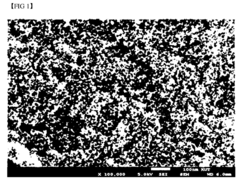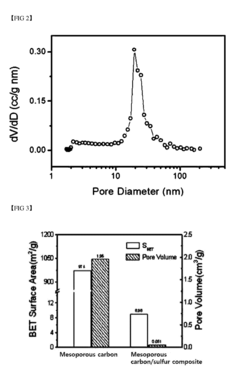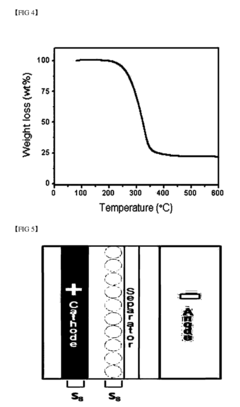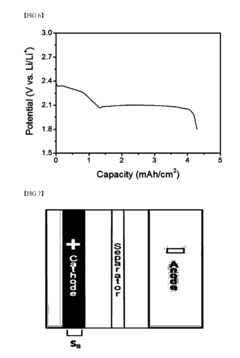Research on improving the energy density of lithium-sulfur batteries - Eureka
Lithium-Sulfur Battery Technology Background and Goals
However, several technical challenges, such as the insulating nature of sulfur, polysulfide shuttle effect, and volume expansion during cycling, have hindered their practical implementation. Overcoming these challenges is crucial for realizing the full potential of lithium-sulfur batteries and enabling their widespread adoption in various applications, including electric vehicles and portable electronics.
Market Demand for High Energy Density Batteries
- Rising Demand for EVs and Renewable Energy
The growing adoption of electric vehicles (EVs) and the increasing use of renewable energy sources like solar and wind power have fueled the demand for high energy density batteries. - Limitations of Lithium-ion Batteries
While lithium-ion batteries have been the dominant technology, their energy density limitations have become a bottleneck for applications requiring longer range or higher energy storage capacity. - Potential of Lithium-Sulfur Batteries
Lithium-sulfur (Li-S) batteries offer a theoretical energy density up to five times higher than conventional lithium-ion batteries, making them a promising alternative for high energy density applications. - Emerging Applications
High energy density batteries are crucial for emerging applications such as grid-scale energy storage systems, long-range electric aircraft, and space exploration missions, where weight and energy density are critical factors.
Current State and Challenges of Lithium-Sulfur Batteries
- Limited Energy Density
Lithium-sulfur batteries have a theoretical energy density of 2,600 Wh/kg, significantly higher than conventional lithium-ion batteries. However, their practical energy density is much lower, typically around 300-600 Wh/kg, due to issues like the insulating nature of sulfur and the shuttle effect. - Polysulfide Shuttle Effect
The dissolution of lithium polysulfide intermediates in the electrolyte leads to the shuttle effect, causing active material loss and rapid capacity fading. This is a major challenge that needs to be addressed for improved cycle life and efficiency. - Insulating Nature of Sulfur
Sulfur has a low electronic conductivity, which hinders efficient electrochemical reactions and limits the utilization of active materials. Strategies to improve conductivity, such as carbon composites or conductive additives, are required. - Volume Expansion
The volume of sulfur expands significantly during lithiation, leading to mechanical stress and degradation of the electrode structure. Accommodating this volume change is crucial for maintaining long-term cycling stability.
Evolution of Lithium-Sulfur Battery Technologies

Key Players in Lithium-Sulfur Battery Industry
LG Energy Solution Ltd.
Central South University
Core Innovations in Lithium-Sulfur Battery Research
- Increasing the content of solid sulfur or lithium sulfide in the battery without changing the electrode structure. this allows for an increase in the amount of sulfur or lithium sulfide, resulting in improved energy density and capacity.
- Utilizing an interlayer to support the elemental sulfur or lithium sulfide particles, increasing the content of sulfur or lithium sulfide without changing the electrode structure. this interlayer acts as a support for the sulfur or lithium sulfide particles, increasing the energy density and capacity of the battery.
- Interfering with the movement of polysulfides during charging and discharging to prevent them from reaching the negative electrode, where they can react with lithium metal and decrease the lifetime of the battery. by utilizing the innovation points described above, the patent scheme aims to provide a lithium-sulfur battery with improved performance, increased energy density and capacity, and increased volumetric energy density compared to existing lithium-ion batteries.
Potential Breakthroughs in Energy Density Improvement
- Lithium Metal Anodes
- Advanced Sulfur Cathodes
- Solid-State Lithium-Sulfur Batteries










